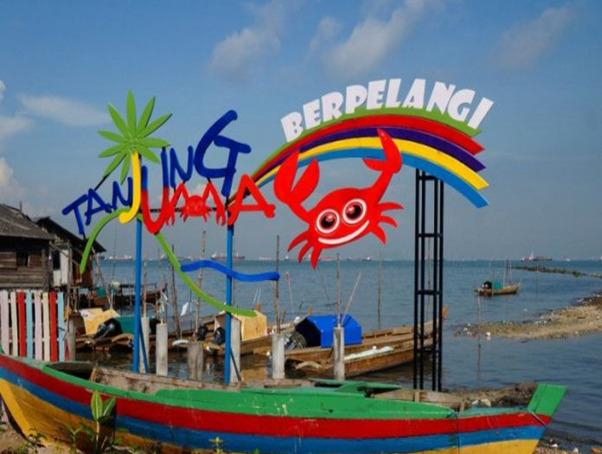Abstract
This article discusses how the reproduction of cultural identity in amalgamated families among Malay and Javanese in Tanjung Uma Village, Lubuk Baja District, Batam, Indonesia. The Malay and Javanese are ethnic groups that have different cultural characteristics, so various forms of negotiation are needed in the formation of cultural identity among family members. This is qualitative research with case study method, using observation and in-depth interviews with 15 informants. We use theory of location of culture by Homi K Bhabha and Stuart Hall's cultural identity to explain that cultural identity is not something rigid and standard but can be produced and reproduced. The research show that in amalgamated families of Malay and Javanese, there is a negotiation of cultural identity, making an impact on the formation of a hybrid identity in which the various elements of the two cultures adapt to each other. Hybrid identity is a form of cultural identity reproduction, the result of negotiations between the innate cultures of the two parents, as well as the dominant culture prevailing in the location where the family internalizes itself. This cultural negotiation is also the reason for the survival of Malay and Javanese amalgamated families, in the midst of high divorce rates among other ethnic amalgamation marriage in Tanjung Uma.
References
Ade, I. (2015). Amalgamasi Antara Warga Etnis Betawi Dengan Tionghoa di Kecamatan Gunung Sindur Kabupaten Bogor (Vol. 3).
Ahmad, N. (2019). Keharmonisan Keluarga Perkawinan Antar Suku Samin dan Suku Jawa di Desa Klopoduwur Kecamatan Banjarejo Kabupaten Blora Provinsi Jawa Tengah. Universitas Islam Negeri Sunan Kalijaga.
Alicia Steffi. (2017). Kepuasan Pernikahan Pada Pasangan Beda Etnis (Studi Pasangan Etnis Tionghoa dan Minangkabau). SSRN Electronic Journal, 1(2), 117.
Barker, C. (2000). Cultural Studies, Theory and Practice. SAGE Publication.
Bhaba, H. K. (1994). The Location of Culture. In Arts and Social Sciences Journal (Vol. 3, Issue 1).
Bhabha, H. K. (1994a). The Locat ion of Culture. Routledge.
Bhabha, H. K. (1994b). The location of culture. Roudledge.
BPS Kota Batam. (2020). Kecamatan Lubuk Baja Dalam Angka 2020. https://batamkota.bps.go.id/publication/2020/09/28/0809d5dc10cdc7116d0e301f/kecamatan-lubuk-baja-dalam-angka-2020.html
Dinas Kebudayaan Provinsi Riau. (2017). Asal Usul Nama Kampung Tua Tanjung Uma.
Foscarini, G. (2018). Collective memory and cultural identity. Ethnologies, 39(2), 81. https://doi.org/10.7202/1051665ar
Ghandi, L. (2001). Teori Poskolonial: Upaya Meruntuhkan Hegemoni Barat. Qalam.
Hall, S. (1990). Cultural Identity and Diaspora. In J. Rutherford (Ed.), Identity: Community, Culture, Difference (pp. 222–238). Lawrence & Wishart.
Herni Widanarti. (2019). Tinjauan Yuridis Akibat Perkawinan Campuran Terhadap Anak. Diponegoro Private Law Review, 4(1), 447–452.
Hidayati, S. (2017). Penyesuaian Budaya dalam Perkawinan. JOMSIGN: Journal of Multicultural Studies in Guidance and Counseling, 1(1), 83. https://doi.org/10.17509/jomsign.v1i1.6053
Hijjang, P., Basir, M., & Ismail, A. (2019). Indigenous people’s environmental conservation system: case study of Kajang society, Indonesia. IOP Conference Series: Earth and Environmental Science, 343(1), 012090. https://doi.org/10.1088/1755-1315/343/1/012090
Ismail, A., Yusuf, A. M., & Safriadi. (2019). Lamba tree: environment wisdom and its resistance to development. IOP Conference Series: Earth and Environmental Science, 343(1), 012094. https://doi.org/10.1088/1755-1315/343/1/012094
Jacobson, J., Hall, S., & Gay, P. Du. (1997). Questions of Cultural Identity. The British Journal of Sociology, 48(1), 153. https://doi.org/10.2307/591920
Kelurahan Tanjung Uma. (2021). Profil Kelurahan Tanjung Uma.
Kim, B. S. K., & Alamilla, S. G. (2017). Acculturation and enculturation: A review of theory and research. Social Issues in Living Color: Challenges and Solutions from the Perspective of Ethnic Minority Psychology, 2(February), 25–52.
Miles, M. B., & Huberman, A. M. (1994). Qualitative Data Analysis. SAGE Publication.
Monahan, T. P. (2010). Interracial marriage and divorce in the state of Hawaii. Eugenics Quarterly, 13(1), 40–47. https://doi.org/10.1080/19485565.1966.9987642
Permata, B. D., & Syafrini, D. (2022). Kebertahanan Keluarga dengan Perkawinan Amalgamasi pada Etnis Melayu dan Jawa di Tanjung Uma Kota Batam. Jurnal Perspektif, 5(3), 364–373. https://doi.org/10.24036/perspektif.v5i3.650
Rahmatina, D., & Hidayat, M. A. (2021). Amalgamasi etnik Tionghoa dan etnik Madura dalam konstruksi indentitas religius anak di Kabupaten Bangkalan Madura. Gulawentah:Jurnal Studi Sosial, 6(2), 119. https://doi.org/10.25273/gulawentah.v6i2.10895
Salamah, U. (2018). Problematika Pasangan Suami Istri Dalam Keluarga Beda Budaya (Studi Kasus Tiga Pasangan Suami Istri Di Desa Babakan Jatimulya Kecamatan Lebaksiu Kabupaten Tegal).
Sari, N. (2019). Identitas Hybrid Cina (Studi Kasus Kelurahan Gabahan, Kecamatan Semarang Tengah, Semarang). In Society (Vol. 2, Issue 1).
Stebbins, R. A. (2002). Identity and cultural tourism. Annals of Tourism Research, 24(2), 450–452. https://doi.org/10.1016/s0160-7383(97)80014-x
Veronica, J. (2017). Negosiasi Identitas Dalam Pernikahan Tanpa Marga Pada Pasangan Campuran (Suku Batak dan Suku Lainnya). Ekp, 13(3), 1576–1580.
Weinreich, P. (2009). “Enculturation”, not “acculturation”: Conceptualising and assessing identity processes in migrant communities. International Journal of Intercultural Relations, 33(2), 124–139. https://doi.org/10.1016/j.ijintrel.2008.12.006

This work is licensed under a Creative Commons Attribution-NonCommercial 4.0 International License.
Copyright (c) 2023 ETNOSIA : Jurnal Etnografi Indonesia





